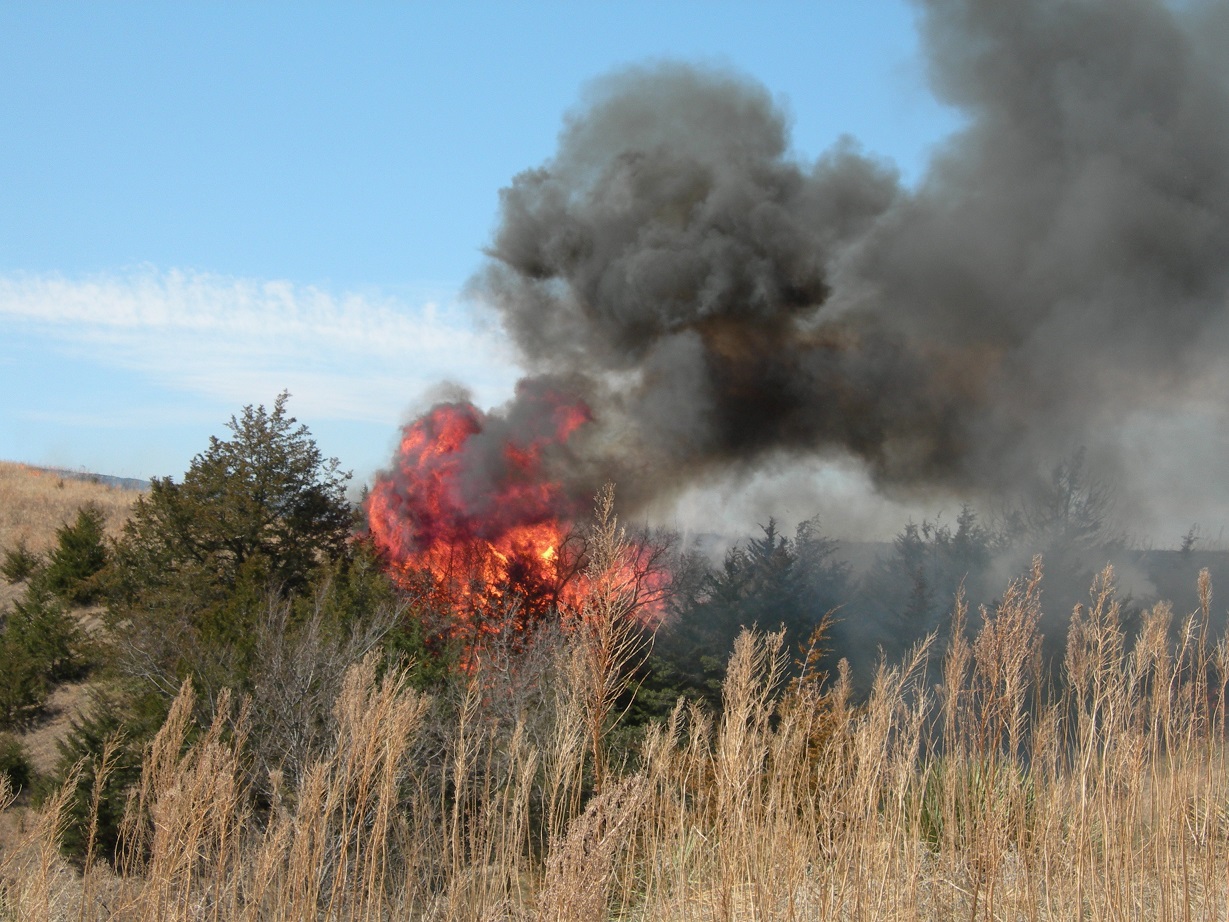
By Bethany Johnston and Meredith Bremer, Nebraska Extension Educators
A scary issue facing Nebraska’s grassland managers is Eastern Redcedar Invasion. In a recent paper by Victoria Simonson, UNL student, the costs of being “reactive versus proactive” in eastern redcedar invasion management were described. This article will highlight key points from the paper.
A grassland landscape with complete conversion to the Eastern redcedar population results in a 75% decrease in forage production. In the Southeastern Nebraska tallgrass prairies this conversion will occur in roughly 40 years.
Early on during the cedar invasion, producers oftentimes do not notice a decrease in livestock grazing carrying capacity, as the forage production is not hindered significantly during this time. A dramatic decrease in forage production is observed by producers however in years 15 to 30 of cedar invasion. During this time frame, the result is an 80% reduction in livestock returns. With current feeder calf prices, producers will be leaving a lot of money on the table.
The NRCS-EQUIP program has provided range managers with government funds to aid in the removal of eastern redcedars when invasion has occurred. This program funds a reactionary approach to juniper invasions. Methods of reactionary redcedar removal include: mechanical removal, herbicides, or prescribed fires.
REACTIVE- MECHANICAL
Mechanical removal is easier when trees are under three feet in height, as producers can oftentimes use hand shears to remove the trees. As the trees mature however, mechanical removal often proves more difficult and more costly. Heavy machinery is brought in during this time to remove trees. Two negatives associated with heavy machinery removal are soil disturbances and the inability of heavy machinery to remove trees on significant land slopes.
REACTIVE: HERBICIDES
Herbicides utilized for tree removal include, hexazinone, picloram, or tebuthioron and can be administered via foliar sprays, injections, or soil applications. Herbicides are not frequently used to reduce cedar tree populations due to their ineffectiveness, as trees will become herbicide resistant as they mature. Herbicide application to tree roots becomes difficult, as tree density and foliage increase.
REACTIVE: PRESCRIBED BURNS
Prescribed fires are an effective management tool in combating cedar tree invasions if conducted properly. Prescribed fires need to be performed by trained individuals and the fire needs to be of high intensity if killing trees of both small and large heights is desired. Low intensity fires will not kill tall trees, thus a higher intensity fire is needed to kill cedars of all sizes.
Three methods of prevention to cedar invasion can be used: haying, high density goat grazing, and prescribed fires.
PREVENTION: HAYING
Haying can be difficult in pastures where the slope of the land and other land features do not permit haying equipment passage. However, if haying is possible and the seedlings are shorter than the grass surrounding, the cedar population can be easily managed. If possible haying should be conducted every couple of years to maintain successful management.
PREVENTION: GOATS
The second preventative method, high density goat grazing, is not a common management practice used in Nebraska, but it could be in the future. Certain breeds of goats will prefer to eat cedar trees and thus will manage the cedar population nicely. Specialized fences, predator protection, and the acquiring of goats can be difficult with this management strategy.
PREVENTION: PRESCRIBED BURNS
Prescribed fires conducted periodically can hinder and control cedar invasion. These fires will reduce the number of new seedlings and will kill trees that have grown past the seedling stage before the cedar population gets out of hand. Again trained personnel are a must with this management strategy.
Redcedar invasion into Nebraska’s grasslands is a very real issue that producers need to address. Reductions in forage production and subsequent livestock return are substantial, and difficult to reverse. Conversations with local NRCS and Extension personnel will get producers on the right track to combat cedar invasions on their grasslands.